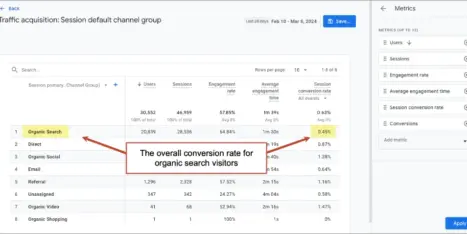If you’re having trouble getting into the search results, the very first thing you should do is check your pages for the noindex tag.
It looks like this:
<meta name=”robots” content=”noindex”>
This code tells search engines that they shouldn’t show a page in their search results. More often than you might expect, webmasters have the noindex tag on their pages without even realizing it, because it came with one of their themes, or because of some other misunderstanding.
So, if you want a page to show up in search results, make sure you ARE NOT using the noindex tag.
However…
The noindex tag can be GOOD for SEO.
Yes, you read that right.
While you need to be very careful with how you use it, the noindex tag plays an important part in search engine optimization, and you would be wise to understand it, rather than simply assuming that it’s always a bad idea to use it.
Why noindex can improve SEO
At this point, I can imagine you might be wondering how an instruction to ignore pages in search engines could help optimize your performance in search engines.
Here’s the thing: there are some pages you just don’t want showing up in search results.
Does anybody really want to land on …/page/27/ of your site? Is that helpful for users? Are any of them going to find what they’re looking for there?
I know, I know, “But at least their landing on my site, and some of them might find what they’re looking for, and eventually they might become customers.”
There’s some truth to this statement, but things aren’t that straightforward. Here’s the problem. What if …/page/27/ outranks the page that’s actually a better fit for the searcher? How do they react when they see your site listed again in the search results? If they recognize your domain name, are they going to bother clicking, or are they going to assume it’s another junk result?
Here’s something that happens more often than you might think. A tag page, archive page, or something similar ends up ranking for the query in question, and Google simply decides not to display the more relevant page in search results. It may be hiding in the index somewhere, but it never shows it on the front page, because Google’s algorithm tends to avoid placing multiple links from the same domain on the front page (unless you’re branding is very good).
The end result is that the more relevant page never ends up ranking, and the less relevant archive page ends up taking its place.
By noindexing archive pages, tag pages, and similar pages, you avoid this problem.
How to use noindex to boost visibility in search results
A case study by Harrison Jones reveals how using the noindex tag can actually send more referral traffic back to your site, when used correctly.
The experiment worked like this:
- First, he noindexed the taxonomy pages on one site (such as category and tag pages). In isolation, this was a bad move. It caused traffic to drop by 20 percent. However, after optimizing the pagination using the rel=next and rel=prev tags, traffic skyrocketed.
- On a second site, he tried optimizing the pagination without using the noindex tag. The result? No dramatic changes.
- On two final sites, he optimized the pagination and noindexed the taxonomy pages. This approach worked. Traffic increased by 30 percent on one site and 20 percent on the other.
So, the noindex tag on its own can hurt your visibility in search results, but when it is combined with optimized pagination, it actually increases your visibility in the search results.
We have ourselves a winner, folks.



